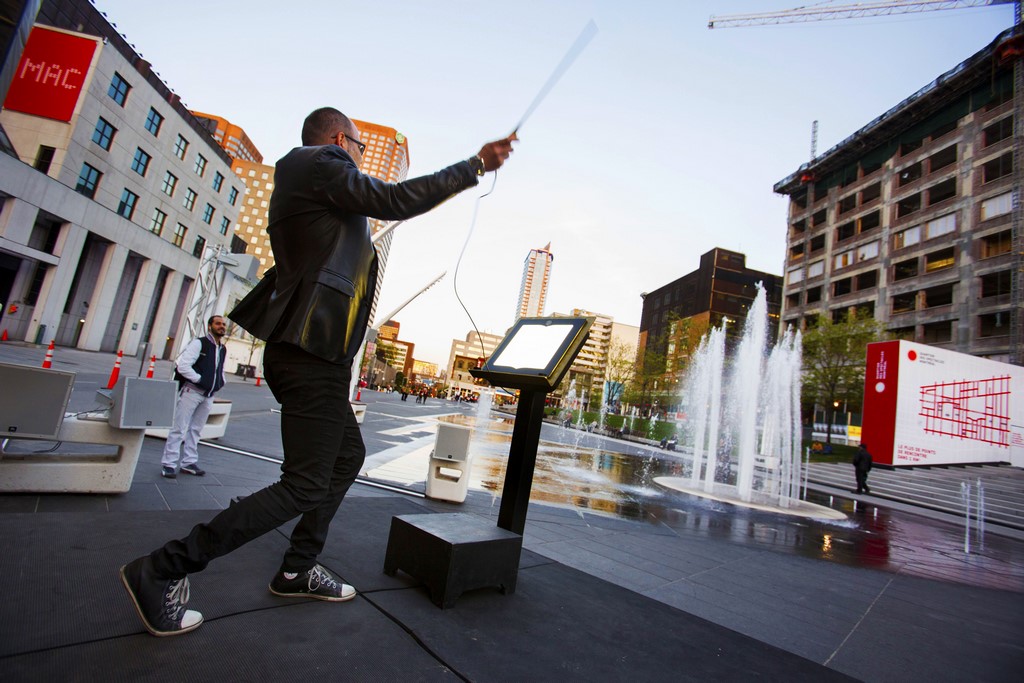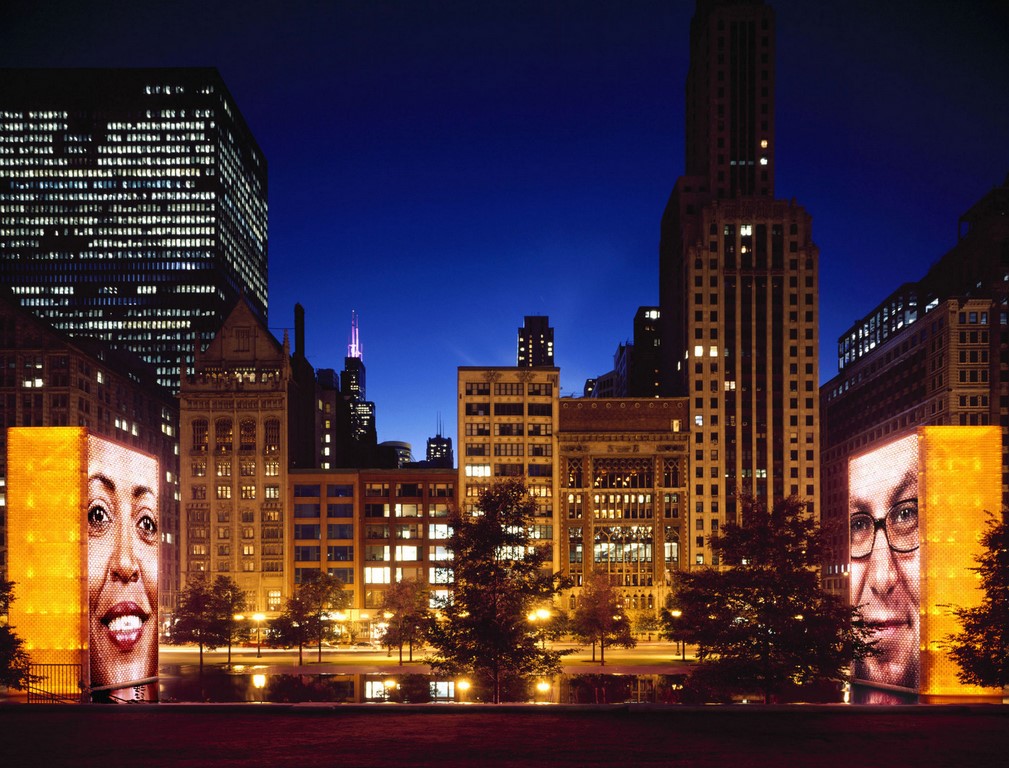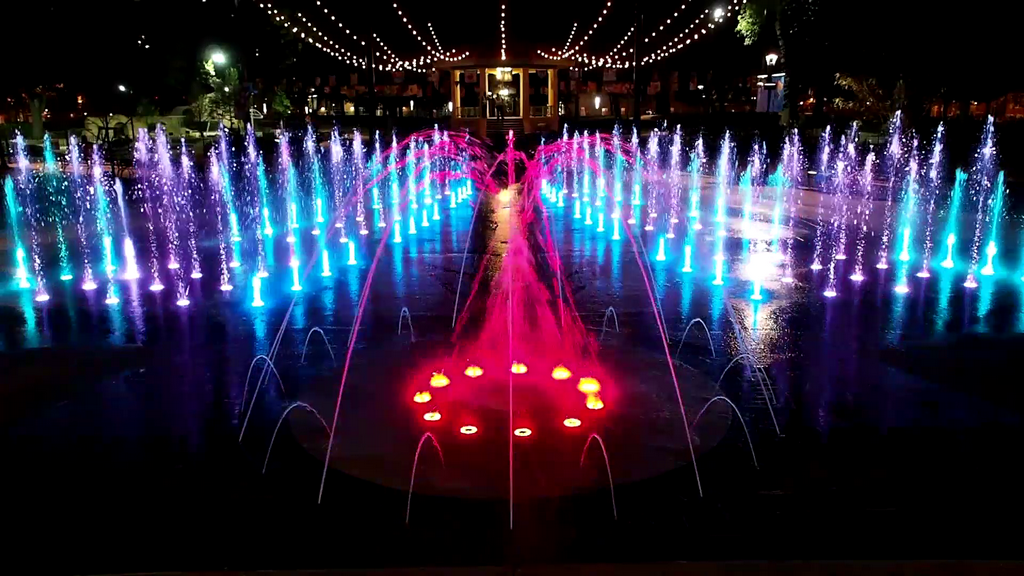Seeking Engagement

When we in the design community follow through with our belief that successful urban spaces must work as gathering spots and community resources for recreation, social interaction and relaxation, all sorts of good things start happening in these environments: Those who initiated the ideas are satisfied with the results; those who designed and built them are empowered to participate in effective, rewarding team processes; and those who use the spaces come back again and again, maintaining a high level of involvement and engagement with the outcomes.
All around, it’s spectacular when it works – and particularly appreciated when it represents a positive change within an affected community. Jan Gehl, whose book New City Spaces (2003) was quoted in the first of these two articles (click here), would classify these as “reconquered” spaces in which strong efforts have been made to find new, workable balances in the creation of meeting places, marketplaces and traffic spaces in urban environments.
From our perspective, the best thing is that water is recognized in the greater urban-design community as a key transformational component of these projects. We’ll explore that fact in three case studies below, but before we get there, let’s take a brief look at factors that are driving this emerging appreciation of water’s role – and how fountains are evolving as a result.
BRIGHT HORIZONS
The first and foremost agent of change in the design of today’s urban oases is mobile technology and its portable combination of global positioning systems, WiFi connectivity and accelerometers. What the presence of this technology does is open the door to our involvement with multimedia technologies that are capable of pushing the fountain experience to startling new levels.
Indeed, in our business, we at Crystal Fountains (Toronto, Ontario, Canada) find ourselves collaborating more and more frequently with multimedia specialists who see fountains as either the core of or as a backdrop for their visions, performances and presentations. On cruise ships in particular but also in a range of urban settings, these innovative artists are integrating what we do into what they do in marvelous ways.
 LED technology is another force we’re keeping up with these days. It’s making water more expressive and, in the right hands, does an amazing job of connecting illuminated water with its surroundings. Big recent changes in color potential and light intensity – and particularly the flexibility that comes with variable white LED technology – are making huge differences here as well, giving us access to everything from the purest whites to billions of color possibilities all in one bright fixture.
LED technology is another force we’re keeping up with these days. It’s making water more expressive and, in the right hands, does an amazing job of connecting illuminated water with its surroundings. Big recent changes in color potential and light intensity – and particularly the flexibility that comes with variable white LED technology – are making huge differences here as well, giving us access to everything from the purest whites to billions of color possibilities all in one bright fixture.
Finally, the increasing sophistication of control technology and the capacity to make refined changes with the touch of a few buttons (or even the wave of a baton) has made a huge difference in fountain performance and appearance. Compared even to the recent past, the possibility of tightly choreographing light, music and jet arrays has come unbelievably far in just a short time, and there’s no real end in sight as professionals all along the performance spectrum figure out new ways to apply the latest upgrades.
To explore the ways in which design teams have been applying this new wisdom about engagement and participation alongside these fast-developing technologies, let’s look at three projects in some detail: Chicago’s Crown Fountain, Cincinnati’s Washington Park and Montreal’s Place des Festivals.
Crown Fountain
Chicago, Illinois
Jaume Plensa, the artist who designed the Crown Fountain for Chicago’s Millennium Park, had this to say about his process in 2006: “Public space is owned by a city’s inhabitants, and the artist should keep this in mind. I have always refused to use public space as a site to install objects that interrupt people’s customary movement. I try to produce something that
invites them to come.”
That spirit, that wonderful focus on participation was completely on display when the fountain was completed in 2004 by Krueck + Sexton Architects as a representation and expression of the city’s cultural mosaic. People are the fountain, completely blurring the lines between public space and waterfeature.
Indeed, the fountain is made possible by public participation, right down to the fact that 1,000 Chicagoan’s faces are projected on the fountain’s two giant LED towers. The artist rejected the concept of expanding beyond the original 1,000 faces as a tribute to the ephemeral quality of life contrasted with the relative permanence of the display. Some of the subjects have since left town; others have died, but their participation as Chicagoans will endure – amazing and larger than life.
Responses to the fountain can get personal, too. During a presentation to an architecture firm not long ago, one of the principals interrupted us by shouting out that he knew the person depicted on one of our Crown Fountain slides. That was pretty cool, and it made an impression that was probably stronger than anything else in what we considered to be a killer presentation.
| The sense of the citizenry’s participation went above and beyond the ordinary, especially when you consider the selection of 1,000 Chicagoans to sit in a dentist’s chair to be filmed for an appearance on the fountain’s two huge LED screens. Ever since its unveiling, Crown Fountain has been a magnet for children and adults at play – or those in need of a backdrop for memorable wedding photos. |
Even cooler is the fact that the fountain has tentacles reaching far into the community in ongoing engagement with stakeholders and park users. Take, for example, the School of the Art Institute of Chicago, which had the responsibility for selecting citizens and videotaping their appearances on the fountain while making certain the cast represented a cross-section of the city with respect to age, gender and ethnicity.
Each of these citizens came to a studio to sit in an old, fully adjustable dentist’s chair so they could be positioned at just the right level; once the setup was done, they were videotaped for 80 seconds while the videographer prompted them to the sorts of actions needed to make the fountain effects work. The sequences were then expanded to 300 seconds to allow for precise interweaving of the video with the water.
Beyond that, those 1,000 subjects were rounded up by calling community groups throughout the city and asking for volunteers, deepening and spreading a sense of community involvement and participation that persists to this day in the fact that the fountain is a popular spot for marriage proposals, wedding photographs and family holiday cards.
The outflow of all of this is that Chicagoans see the Crown Fountain as a community treasure – and a must-see place for everyone they know who visits the city. As a result, the space has become a global attraction (which you can see in action by clicking here) and an incredible economic engine for the city to the tune of $5.2 billion in increased revenue annually.
Not bad for asking a few folks to act at spitting water into a basin.
Washington Park
Cincinnati, Ohio
Described by the American Classical Music Hall of Fame as “The only project in existence that combines classical music, mobile technology, public spaces and a dancing fountain,” Washington Park is the product of a public/private partnership between the Cincinnati Center City Development Corp., the city of Cincinnati, the park board, the city’s corporate and philanthropic boosters and the American Classical Music Hall of Fame.
In an extensive renovation/expansion project completed in 2012 and spearheaded by BHDP Architects (Cincinnati), the park is a uniquely immersive experience driven by the museum’s use of a system – developed by Scott Palamar of H2Oarts (Santa Paula, Calif.) – that allows the fountain’s water to dance to any streamed piece of music. The goal here was simple: Get young people interested in classical music.
To make it happen, the eight-acre Washington Park was the subject of a $46 million revitalization program, with $2.5 million of that sum dedicated to creating a fountain with 107 digitally controlled sequencing jets and lights.
| The fountain in Cincinnati’s Washington Park celebrates music in front of the American Classical Music Hall of Fame and does all it can to build interest in highbrow tunes among kids who come to play in the water as well as adults drawn to watch the spectacle. It’s a grand, interactive, easily programmed system – and has become the focus of local participation in the life of the city both day and night. |
Activating the fountain requires interested park visitors to download a mobile app called WOF Player (to associate it with the museum’s Walk of Fame). Available through both the Android and iTunes systems, the app was developed by a local Cincinnati firm, Swordfish Web Solutions.
Opening the app exposes users to a selection of Hall of Fame inductees with further access to photographs, biographies and brief musical samples performed or written by an inductee. A local radio station added depth (and its participation) by providing local-interest historical/educational tours as part of the mix. Users can hear the music play on their mobile devices or through the park’s sound system. They can further decide if the music will play in the Music Hall Plaza section of the park – or in its Musical Dancing Fountain.
Multiple stakeholders, a deep design team and energized visitors: There’s no telling whether it’ll persuade kids to set aside Katy Perry in favor of Beethoven (or Aaron Copland, as you can see by clicking here), but with this level of interaction, participation and day-to-day fun, who knows what the future holds?
Place des Festivals
Montreal, Quebec, Canada
Place des Festivals was designed by the architects and urban planners at Daoust Lestage, a Montreal-based firm that completed its work on the park and fountain in 2009. The 1.5 acre space is part of the Quartier des Spectacles district and includes Canada’s largest interactive fountain.
With 235 sequencing jets and lights, the fountain is indeed large. It was also a product of the sort of process thoroughly described in this pair of articles: bountiful stakeholder input, a wonderful, fully engaged design team and a community hungry for just this sort of vital, experience-rich gathering place.
What we’d like to focus on here is the degree to which the fountain has encouraged and resulted in an unusual form of public participation in the space, all courtesy of the Maestro system that was installed to control performance of the fountain’s jets and lights in response to a “citizen conductor” and, brilliantly, the sweep of that conductor’s baton.
This unique user interface was conceived and developed by Atomic 3, a multimedia design firm based in Montreal. The system has been loaded with a broad selection of classical music pieces; the conductor makes a selection and the fountain starts to dance in relation to his or her gestures with the baton. There’s other credit to share here, particularly including 20K (Quebec City, Quebec, Canada), which came up with the interactive design, and sound designer Jean-Sebastien Cote (Ottawa, Canada).
| Place des Festivals is Montreal’s social hub and a setting in which local citizens and tourists are asked to participate not only by witnessing performances, but by actually performing themselves by picking up a special baton and conducting a piece of music. The energy of their gestures drives the fountain’s display – a bit of interactive magic that has made it one of the park’s most popular attractions. |
Three sensors key the fountain’s action based on the vigorousness of the conductor’s gestures. The first is a motion sensor embedded in the baton that starts and stops the music. The second is a camera that prompts the volume of the music and the height of the jet action. The third is a pressure gauge in a carpet beneath the conductor that controls the audio system’s percussion.
The signals and data flow from this sensor grid to a computer placed in a room six stories above the space – an astonishing fountain system and an emotional, completely involving experience for the conductor, especially as he or she interacts with the user interface and learns what it takes to produce responses and results!
The experience takes time to set up – three days, I’m told – but it’s so popular that site managers put it back in place any time there’s an opportunity between shows and other events. And again, the fountain (which you can see in performance with a variety of conducting styles by clicking here) is working not only for the people who flock to the park, but also for the stakeholders in the local business community who helped fund its features: They point with glee to $1.5 billion in economic spinoffs they trace directory to their participation in the development of Place des Festivals.
***
As these case studies demonstrate, something magical happens when urban spaces are treated to an appropriately grand level of sensitivity to the interests of all project participants, from the initial stakeholders to the latest users.
If our ambition is to help more of these water-centered urban settings move from idea to reality, we must first of all understand the needs of the given city’s stakeholders and create situations in which, through openness and sensitivity to diverse interests and inputs, a meeting of the minds is facilitated. We also need to extend that consideration and openness to the formation of a design team that believes in collaboration and knows the value of early input from specialists – including fountain folks like us.
Finally, we on the throughput side of the equation – designers, engineers, builders, consultants and suppliers alike – need to recognize the needs of the community. If we’re asking them to use and value an urban space we’re all creating, we need to harness current technology and innovative design – including increasingly seamless interfaces using concealed microtechnology – to define engaging, uplifting spaces that will keep them coming back for more.
The teams that worked on the Crown Fountain, the Washington Park renovation and Place des Festivals absolutely nailed it – and have defined golden opportunities by making other cities hungry for new ideas and, always, similarly positive, similarly engaging ways to participate.
Robert Mikula is director of special projects at Crystal Fountains, an international waterfeature specialist based in Toronto, Ontario, Canada. He has more than 20 years’ experience in design and project management and is also a registered landscape architect who spent several years designing aquatic theme parks before taking his current post. Mikula is also active on the education front as a guest lecturer in the landscape architecture programs at both the University of Guelph and the University of Toronto and as a frequent participant in seminar programs at trade shows and symposia. He has also written numerous magazine articles on water effects, illumination and systems design. Simon Gardiner is director of creative design for Crystal Fountains. An industrial design graduate of the Ontario College of Art & Design, he has 20 years’ experience in the watershape design and project management. He is also the author of “Design Considerations of Water Features,” an accredited online course offered by AECDaily.com, an online learning center. Since joining Crystal Fountains in 1998, Gardiner has been involved in some of the company’s most challenging projects in North America and beyond. For more information, visit www.crystalfountains.com.



















